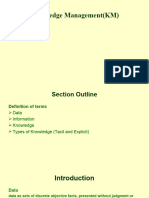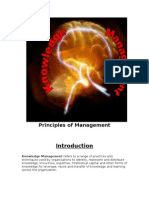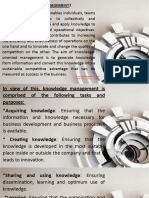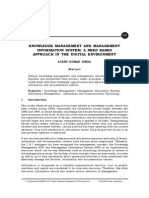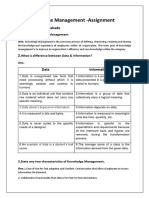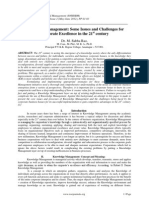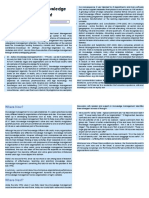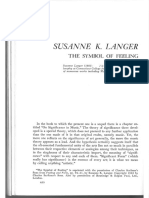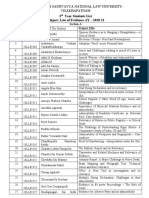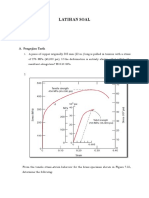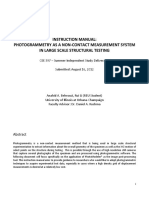0% found this document useful (0 votes)
55 views9 pagesKnowledge Management Essentials
The document describes the key processes in a knowledge management process model:
1) Knowledge acquisition and generation involves capturing tacit and explicit knowledge from various sources.
2) Knowledge capture uses technologies and mapping techniques to document knowledge.
3) Knowledge organization categorizes and describes knowledge for easy retrieval using tools like indexing.
4) Knowledge is stored in repositories to preserve it for future use.
Uploaded by
maosalvadorCopyright
© © All Rights Reserved
We take content rights seriously. If you suspect this is your content, claim it here.
Available Formats
Download as PDF, TXT or read online on Scribd
0% found this document useful (0 votes)
55 views9 pagesKnowledge Management Essentials
The document describes the key processes in a knowledge management process model:
1) Knowledge acquisition and generation involves capturing tacit and explicit knowledge from various sources.
2) Knowledge capture uses technologies and mapping techniques to document knowledge.
3) Knowledge organization categorizes and describes knowledge for easy retrieval using tools like indexing.
4) Knowledge is stored in repositories to preserve it for future use.
Uploaded by
maosalvadorCopyright
© © All Rights Reserved
We take content rights seriously. If you suspect this is your content, claim it here.
Available Formats
Download as PDF, TXT or read online on Scribd
/ 9









